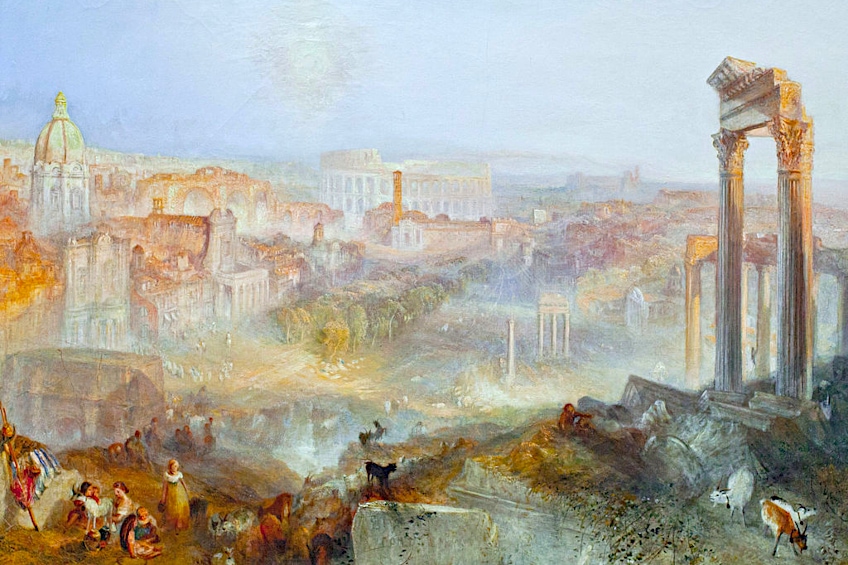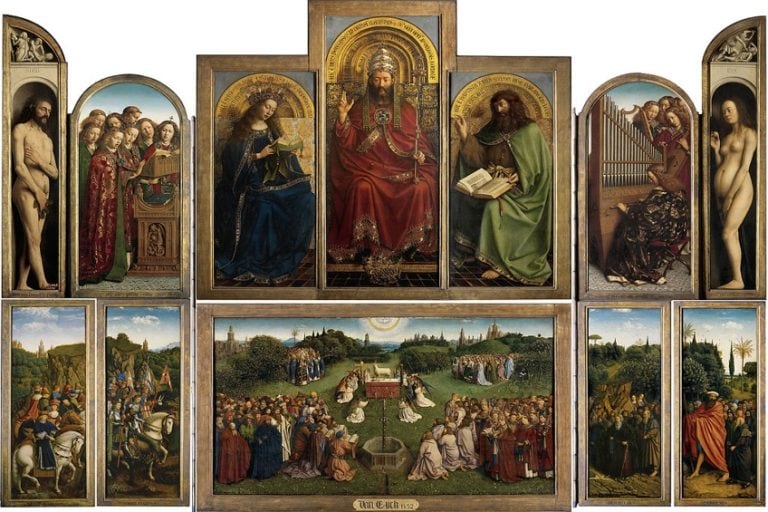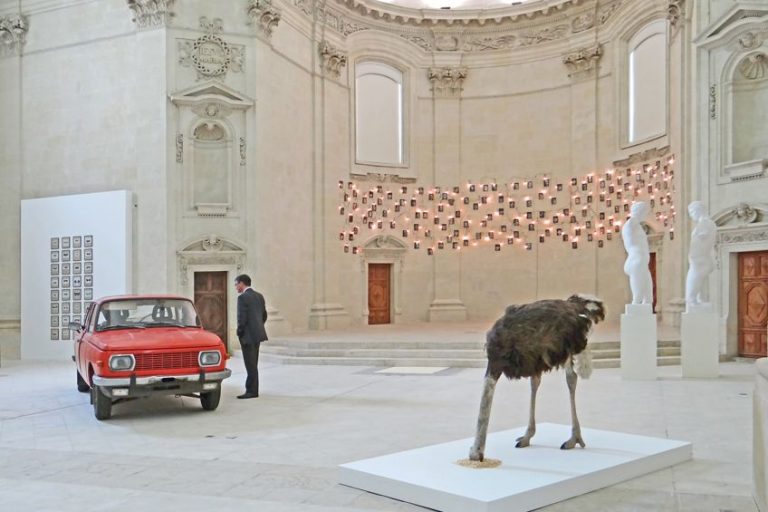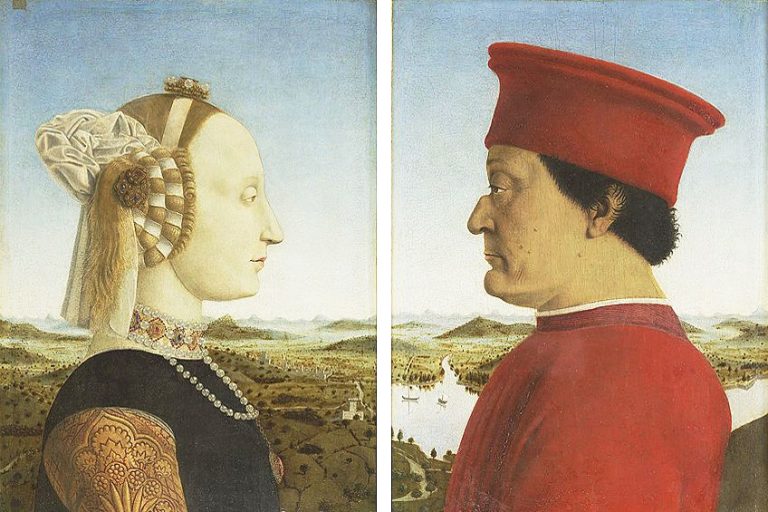What Is Atmospheric Perspective in Art? – Visual Illusions of Depth
What is atmospheric perspective in art? You may have heard of the terms “aerial perspective” or “atmospheric perspective” and perhaps this sounds quite technical to you. On the contrary, atmospheric perspective in art is one of the most effective techniques artists can employ to make landscapes come to life. While linear perspective derives from geometry and mathematics, aerial perspective derives from the study of optics. Artist can use one or both of these techniques to create an illusion of depth and distance in their artworks. In this article, we will examine what atmospheric perspective is, and provide a few examples of atmospheric perspective. Read on for more information!
The Role of Atmospheric influence on Light in Art
The Earth’s natural landscape includes not only the physical terrain of the land but also the atmosphere above it. The behavior of light as it passes though the air and how it is perceived by human eyes means that objects do not appear the same to us when we are close to them, than when they are far removed from us. These shifts in light and their effects on perception fall under the science of optics.
By studying optics, artists have learnt how to mimic the intricacies of light to create illusions of distance in their art.

Atmosphere refers to a layer of gasses that encapsulate the Earth and contribute to the sustenance of life on our planet. When we look up at the stars at night and they appear to twinkle, it is because we are looking at them through the layers of gasses and a mixture of water, dust, and other particles that make up the atmosphere. When astronauts see stars in space, they appear as static points of light.
Consider also how rainbows are formed when water droplets in the air refract or scatter the light that passes through them.
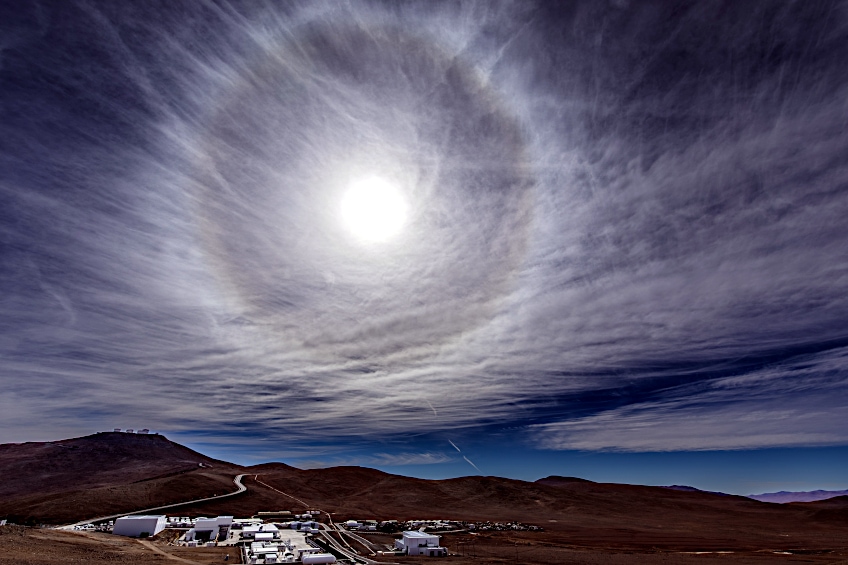
The varying shades of the sky are determined by the effects of sunlight in conjunction with how the atmosphere refracts light. This is also one of the reasons why the sky generally appears to be blue.
Blue light is the one color that scatters the most in comparison to other colors and because it travels in shorter wavelengths, we often only see blue.
The interplay between the atmosphere and the physics of light plays a huge role in the visual perception of color, form, and space. An understanding of these factors have influenced how artists replicate the varying effects of light across distances in naturalistic art.
An Introduction to Atmospheric Perspective
So, what is atmospheric perspective in art? To capture a landscape, or any three-dimensional scene for that matter, artists need to use various perspectival devices and techniques to illustrate it. Atmospheric perspective, also referred to as aerial perspective in art, refers to the techniques that artists employ to replicate the effects of distance on the human eye’s ability to distinguish color, form, and detail.
In art, atmospheric perspective has been employed by artists for many centuries and can be traced back to the ancient Greco-Roman period. Artists of ancient Rome and Greece created elaborate murals that included landscapes painted using atmospheric perspective
In the Middle Ages when the material world was considered corrupt and sinful and artists aimed to express spiritual truths, naturalistic representational techniques were largely abandoned. However, the birth of the Renaissance during the 15th century saw the rediscovery of these techniques in painting.

While most artists of the Renaissance explored how to use sciences such as geometry and mathematics to create illusions of depth and distance in art with linear perspective, that great polymath Leonardo Da Vinci expanded his enquiries to include optics, and is credited with coining the term aerial perspective in art.
Da Vinci described aerial perspective in a text called Treatise on Painting as a phenomenon whereby “colors weaken in proportion to their distance from the person viewing them”.
Long before Da Vinci, Chinese artists such as Han Cho employed an atmospheric perspective with a varied approach as early as the 12th century. The ancient art of Chinese landscape painting is highly technical with an emphasis on using different types of brushwork to achieve various effects.
In Han Cho’s treatise on painting, Shan-Shui Ch’un-ch’uan chi (1167) he provides details on three different types of perspective and how atmospheric conditions influence the clarity and appearance of objects.
Characteristics of Atmospheric Perspective
Below are a few characteristics of atmospheric perspective as seen in art and images of landscapes that can help you identify what an aerial perspective image looks like and how it may influence the visual perception of the objects in it.
Distance and Saturation
If looking at an image or scene from a distance, an atmospheric perspective can make colors appear less vibrant and desaturated.
One of the first effects of gaining an atmospheric perspective is that it causes objects in the far distance to appear as though their colors have been diluted.
Objects in the distance tend to blend in with the saturation of the atmosphere while the objects in the foreground appear highly saturated due to the closer distance between the viewer and the object.

Increased Value and Decreased Contrast
The further away objects are from the viewer the lighter and “fuzzier” they may appear. This is because the human eye’s ability to make out contrast diminishes over a distance. Objects that are close will be more clearly delineated and distinct from their background. Think of photography where the focus is set on the image closest to the lens and everything beyond that fades into the distance.
Colors will also go up in value (become lighter/whiter) the further away the object is.

Atmospheric Temperature and Perception
The edges of a horizon or horizontal layers of a landscape or cityscape may appear well-defined and are known as “sharp edges”. When viewing a scene from an atmospheric perspective, it is important to take note that atmospheric temperature also plays a role in influencing the visual output of objects.
If you have ever seen the reflection of heat waves above a piping hot tarmac, then you already have an idea of how the atmospheric temperature can alter our visual perception. These “waves” are induced by the atmospheric gas density that acts as a lens between our eye and the object. So, we truly never see things as they are.

The most extreme example of temperature induced image-creation is the phenomenon of a mirage, which is an image created in the intense heat of deserts, resulting in illusions of things that are simply not there.
Strong Lighting and Clarity
Strong sources of light, such as the sun, can weaken atmospheric perspective in that it weakens the appearance of the influence of the atmosphere on the visual output of the objects under it. In other words, objects exposed to harsh light will appear to have sharper edges and be clearer as opposed to objects under dimly lit atmospheric conditions.
Objects gain more saturation and color when a strong light passes over them and this can be observed during daylight when the sun passes over buildings at certain hours.
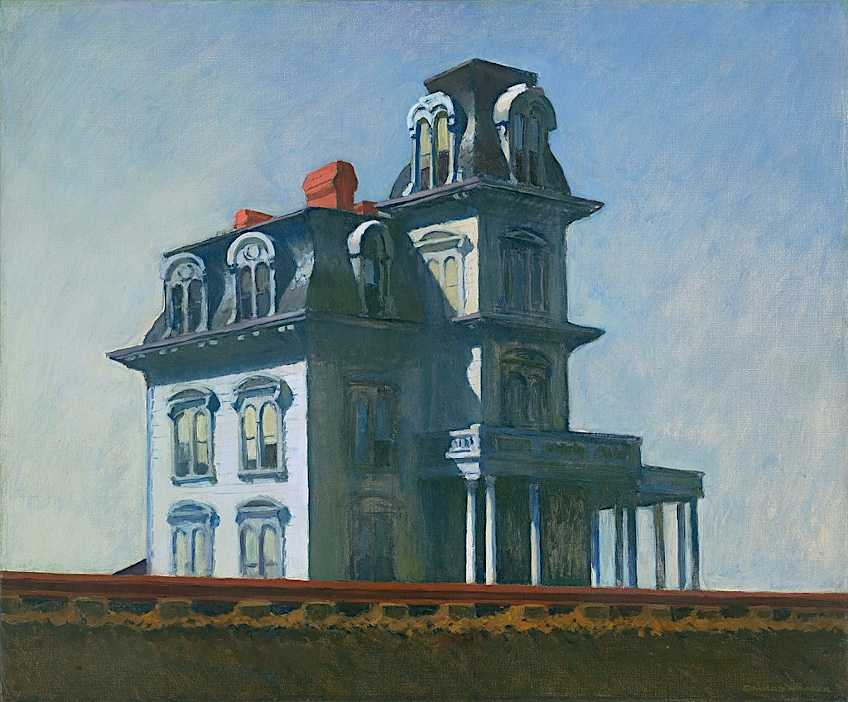
You may also notice this if you live close to a mountain and the sun illuminates the tip of the mountain, causing it to appear in high contrast to the atmosphere.
Linear Perspective vs. Atmospheric Perspective
After reviewing the different effects and characteristics of atmospheric perspective images, you may also wonder how atmospheric perspective differs from linear perspective. Linear perspective is a technique based on geometry that was perfected during the Renaissance to create the illusion of depth and three-dimensional space on a flat surface.
Technically applied, an artist will draw all parallel lines to converge at one vanishing point on the horizon.
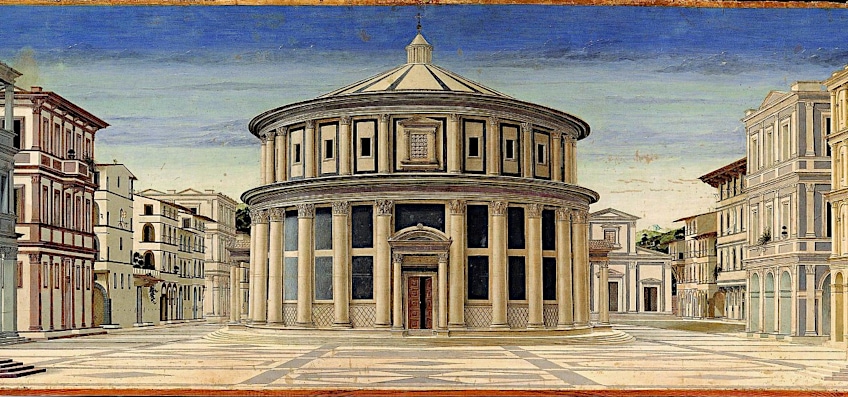
The invention of linear perspective is credited to Filippo Brunelleschi who was a famous Italian architect of the early Renaissance. The three main constituents of linear perspective include a horizontal line, parallel lines (orthogonal lines), and a vanishing point.
Atmospheric perspective on the other hand is more centered on how artists can replicate the effect that the atmosphere has on the visual nature and perception of objects under it. Atmospheric perspective affects hue, value, and tone, whereas linear perspective affects distance, depth perception, and scale.

There are examples of art where either the one or the other technique has been used. However, many artists combine both forms of perspective, especially when painting images that include objects such as buildings, or other human constructions with features such as perfect right angles, completely straight lines, or other elements that may not frequently occur in nature.
The Top Three Primary Effects of Atmospheric Perspective
The three primary effects of atmospheric perspective include the following in relation to an increase in the distance:
- The hues and colors of the objects lose their saturation and increase in value (gray). The value will also become lighter.
- The object color shifts toward a cooler color; it moves toward the background color and is usually bluer.
- The contrast of the details of the object decreases alongside the contrast between the object and the background.
Examples of Atmospheric Perspective Paintings
Atmospheric perspective can be found in numerous paintings as seen in the examples below. The recreation of an atmospheric scene has taken on many different visual forms but is most commonly found in landscape paintings. Below, we will explore a few atmospheric perspective examples and how it is used in various artworks.
Pavilions Among Mountains and Streams (c. 960 – 1279) by Yan Wengui
| Artist | Yan Wengui (c. 967 – 1044) |
| Date | c. 960 – 1279 |
| Medium | Ink on silk; hanging scroll |
| Dimensions (cm) | 103.9 x 47.4 |
| Where It Is Housed | National Palace Museum, Taipei |
This majestic atmospheric perspective painting is a perfect example of atmospheric perspective in art and illustrates the aesthetics of early Chinese landscape painting, which is unlike the approach that Western painters displayed. The painter, Yan Wengui was a military soldier and native of Wuxing, Zhejiang, who ventured on to become a wall painter for the Xiangguo Temple and Yuqing Zhaoying Abbey. He was also established as a painter-in-waiting under the regime of Emperor Zhenzong and was talented at landscape painting.
Yan eventually went on to represent one of the two leading schools in Northern landscape painting.

This landscape painting is one of the many “Yan views” executed as a hanging scroll with many majestic scenes in one landscape.
The use of atmospheric perspective can be seen in the way that Wengui creates a high contrast between the mountaintops and the rest of the landscape.
The lighter parts of the mountain appear as though a mist falls down the valleys and makes the mountainsides appear light or in the distance.
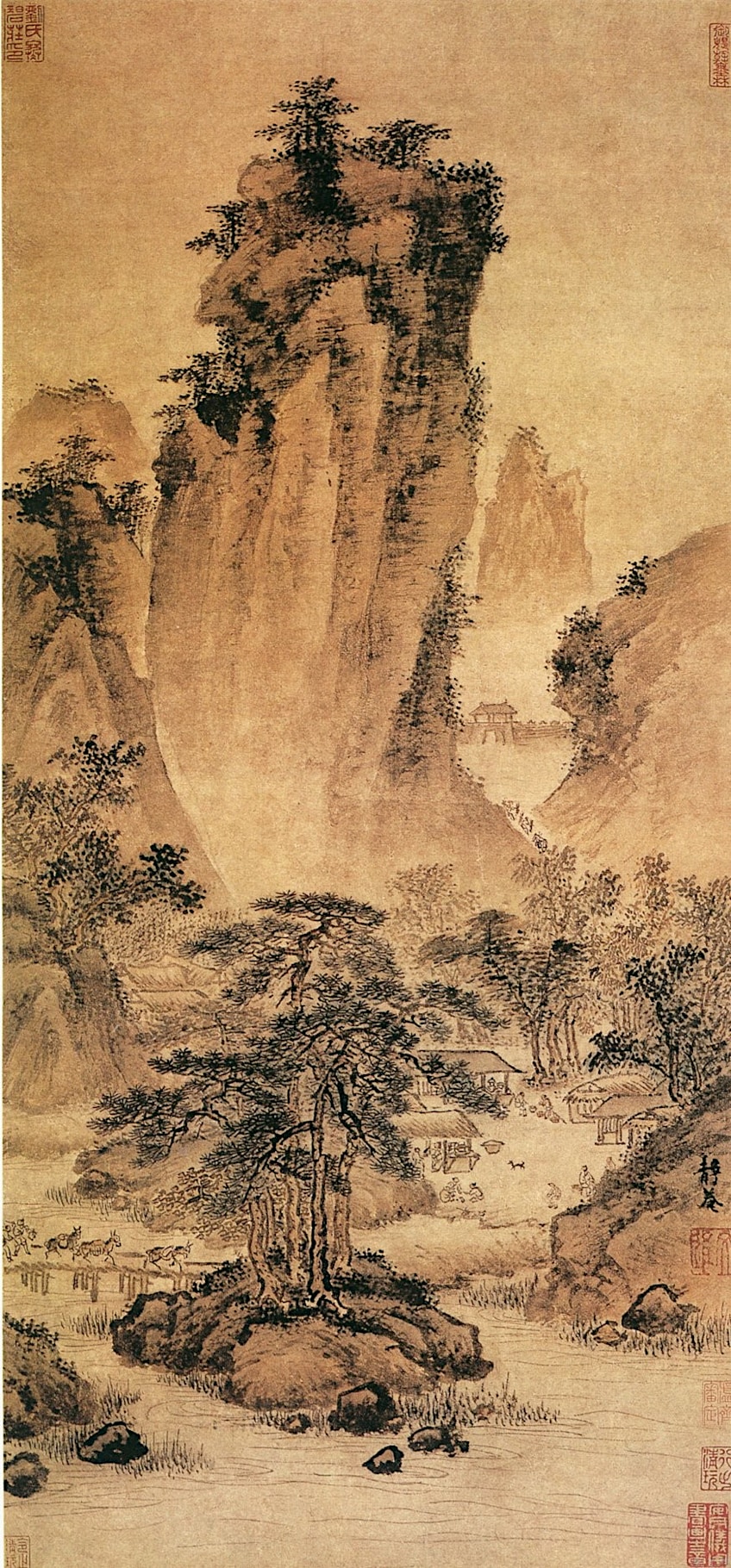
From the Roof of the Hotel Hassler (2001) by Wolf Kahn
| Artist | Wolf Kahn (1927 – 2020) |
| Date | 2001 |
| Medium | Pastel on paper |
| Dimensions (cm) | 22.9 × 30.5 |
| Where It Is Housed | Manolis Projects, Miami |
In a marriage of Realism and Abstract Expressionism of classic 20th-century New York fashion, Wolf Kahn was a popular second-generation New York School artist whose landscapes were inspired by the works of Henri Matisse and Mark Rothko (among many others). This landscape pastel drawing by Kahn is a great example of atmospheric perspective and can be seen in Kahn’s choice of color and rendering of detail using lines in such a simple yet effective way.
The buildings in the distance of From the Roof of the Hotel Hassler are rendered as solid blocks of color and lack the clarity and detail given to the buildings in the foreground. Kahn also uses a slight gradation from dark gray to a lighter blue-gray to illustrate distance and continuity, as influenced by the atmosphere above.
While the drawing may appear to be incomplete, it is as if it is a snapshot of memory from the artist and the simple scribbles on the buildings in the foreground help define the structures of the city and offer insight into the perspective that Kahn viewed the city, as if from the corner of a rooftop.
Untitled #5272 (2012) by Hiro Yokose
| Artist | Hiro Yokose (1951 – Present) |
| Date | 2012 |
| Medium | Oil and wax on canvas |
| Dimensions (cm) | 121.9 × 182.9 |
| Where It Is Housed | Winston Wächter Fine Art, New York |
This stunning atmospheric painting by Japanese artist Hiro Yokose is a breath of fresh air. The painting illustrates a natural landscape filled with what appears to be a lake in the foreground and the distant vegetation and trees along the ridges of the lake.
One can see Yokose’s demonstration of atmospheric perspective by observing the distant ghost-like traces of trees in the distance, which appear lighter than the visible trees.
One can assume that this scene represents the mist of an early morning just before dawn as seen in the cloudy atmosphere above the lake. The image appears blurry due to the thick fog/mist. Yokose is famous for his Minimalist approach to landscape painting and the dream-like aesthetic quality of his atmospheric paintings.
Atmospheric perspective can seem daunting to understand at first, but by studying more examples of its role in drawing and painting, you will be able to grasp the concept. It remains one of the most effective methods of creating the illusion of distance and depth on a picture plane, even where linear perspective has not been employed.
Take a look at our atmospheric perspective in art webstory here!
Frequently Asked Questions
What Is Atmospheric Perspective in Art?
Atmospheric perspective is also referred to as aerial perspective and is a technique based on the study of optics that artists use to create a sense of depth and distance an in artwork by recreating the shifts in the clarity, saturation, and color that occur when light is reflected from objects across varying distances and atmospheric conditions.
How Can You Identify Atmospheric Perspective in Art?
Some of the ways in which you can identify atmospheric perspective in art include varying degrees of contrast applied to objects relative to their distance from the viewer; greater color intensity and saturation in the foreground of an image than in the background; less clearly defined boundaries between objects that are further away than those that are closer and “in focus”; a bluish tinge or colder colors applied to objects in the distance, compared to warmer colors in the foreground.
What Is the Difference Between Linear Perspective and Aerial Perspective?
The difference between linear perspective and aerial perspective is that linear perspective is a technique used to create the illusion of three-dimensional space and depth on a flat surface suing a mathematically based system using a vanishing point on a horizon. Aerial perspective in art refers to a technique used to create an illusion of depth based on the study of optics. Artists can re-create the effects that the atmosphere has on the visual perception of objects at a different distances by adjusting their clarity and contrast (decreasing contrast at greater distance), their intensity or saturation of color, and by increasing their levels of blue. Artists can use either one of these techniques or even combine both methods to create an illusion of depth, depending on their style and subject-matter.
Isabella studied at the University of Cape Town in South Africa and graduated with a Bachelor of Arts majoring in English Literature & Language and Psychology. Throughout her undergraduate years, she took Art History as an additional subject and absolutely loved it. Building on from her art history knowledge that began in high school, art has always been a particular area of fascination for her. From learning about artworks previously unknown to her, or sharpening her existing understanding of specific works, the ability to continue learning within this interesting sphere excites her greatly.
Her focal points of interest in art history encompass profiling specific artists and art movements, as it is these areas where she is able to really dig deep into the rich narrative of the art world. Additionally, she particularly enjoys exploring the different artistic styles of the 20th century, as well as the important impact that female artists have had on the development of art history.
Learn more about Isabella Meyer and the Art in Context Team.
Cite this Article
Isabella, Meyer, “What Is Atmospheric Perspective in Art? – Visual Illusions of Depth.” Art in Context. January 27, 2023. URL: https://artincontext.org/what-is-atmospheric-perspective-in-art/
Meyer, I. (2023, 27 January). What Is Atmospheric Perspective in Art? – Visual Illusions of Depth. Art in Context. https://artincontext.org/what-is-atmospheric-perspective-in-art/
Meyer, Isabella. “What Is Atmospheric Perspective in Art? – Visual Illusions of Depth.” Art in Context, January 27, 2023. https://artincontext.org/what-is-atmospheric-perspective-in-art/.


